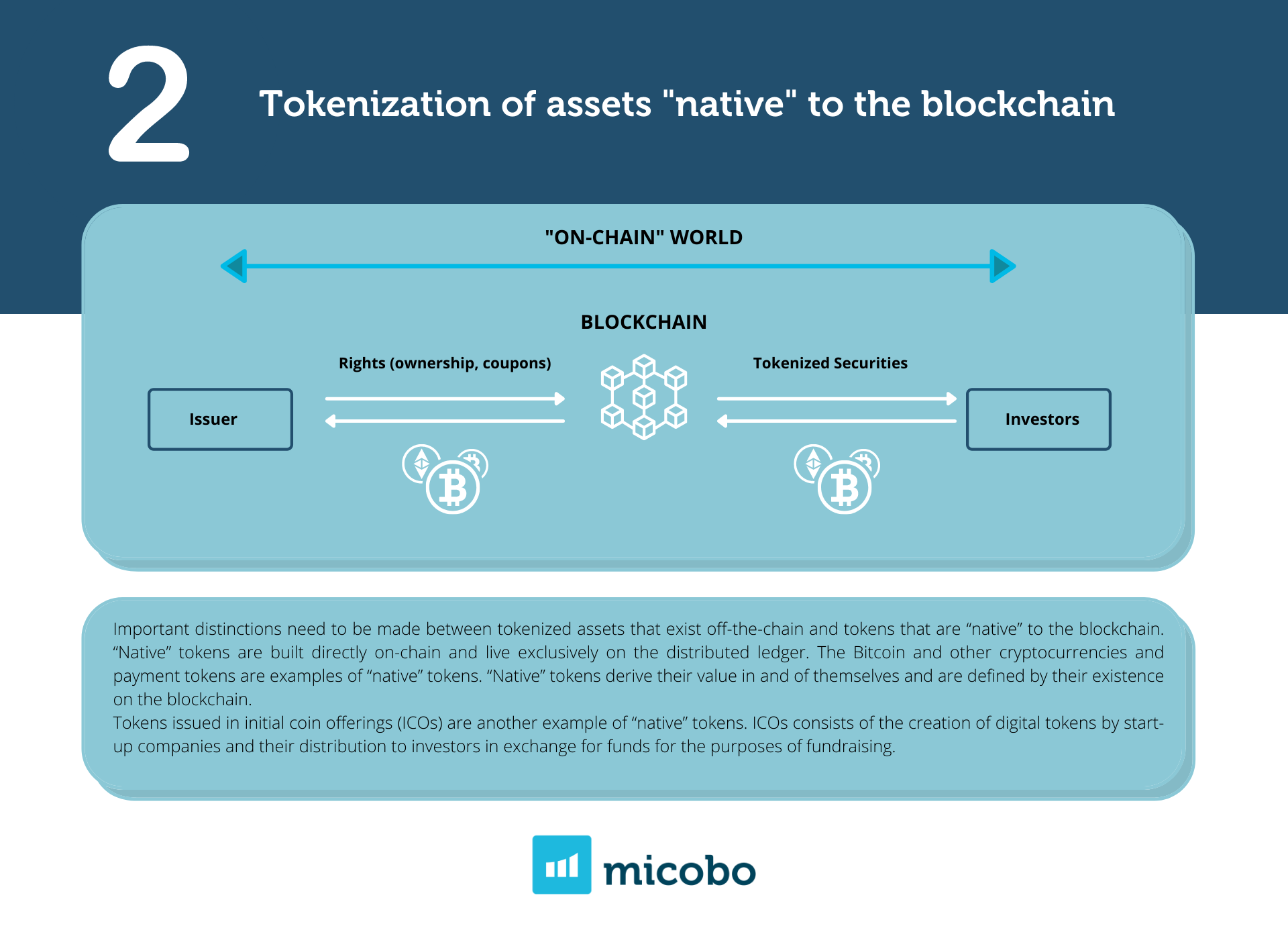Two Types of Asset Tokenization
Tokenization of assets has undoubtedly been a subject of high interest in the last few years. Its rise is bringing not only more investors into the game but also requires a lot of new regulations and classifications. The common classification framework for crypto-assets is lacking and as a result the market and all of the participants defining tokenization and its elements in many, at times even conflicting ways.
Tokenized assets are often confused for native digital assets such as bitcoin or CBDC (central bank digital currencies), while the issuance of tokenized securities is identified by some as the next generation of ICOs. This article aims to give a broader explanation of the differences between these two types of asset tokenization – tokens representing a pre-existing real asset and tokens “native” to the blockchain.

Tokens representing a pre-existing real asset
There is an important distinction between the “native” tokens and tokenized assets that exist off the chain. Issued tokens exist on the chain and then carry the rights of the assets they represent. Therefore, acting as a store of value. The real assets backing the tokens that are issued. Hence, they continue to exist in the “off-chain” reality and. In these cases (physical real assets), the assets would usually need to be placed in custody to ensure that the tokens are constantly backed by these assets.
This only highlights the important role of the custodianship of assets in asset tokenization transactions. The communication between the “off-chain” and “on-chain” environments will be important for assets that continue to exist off the chain.

Tokens “native” to the blockchain
Tokens that are “native” to the blockchain are built directly on-chain. They live only on the distributed ledger. “Native” tokens, for example, Bitcoin, other cryptocurrencies, and payment tokens, derive their value in and of themselves. Native tokens are defined by their existence on the blockchain.
Tokens issued in initial coin offerings (ICOs) are another example of “native” tokens. ICOs consists of the creation of digital tokens by start-up companies and their distribution to investors in exchange for funds for the purposes of fundraising.

About micobo
micobo GmbH is a leading European software company for Security Token Offerings and Blockchain Software Development (DLT). It provides fully compliant software solutions for Security Token Offerings and advises on structuring DLT- and Blockchain-based Securities. micobo empowers financial institutions with state-of-the-art technology focusing on providing a better customer experience and achieving measurable results.
Author
Marcelina Fryszka (mf@micobo.com)
Bibliography
-
OECD (2020), The Tokenisation of Assets and Potential Implications for Financial Markets, OECD; Blockchain Policy Series, www.oecd.org/finance/The-Tokenisation-of-Assets-and-Potential-Implications-for-Financial-Markets.html.
